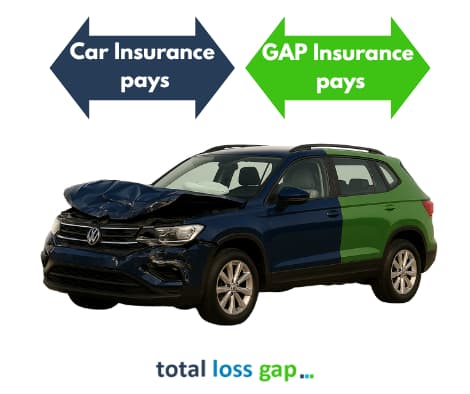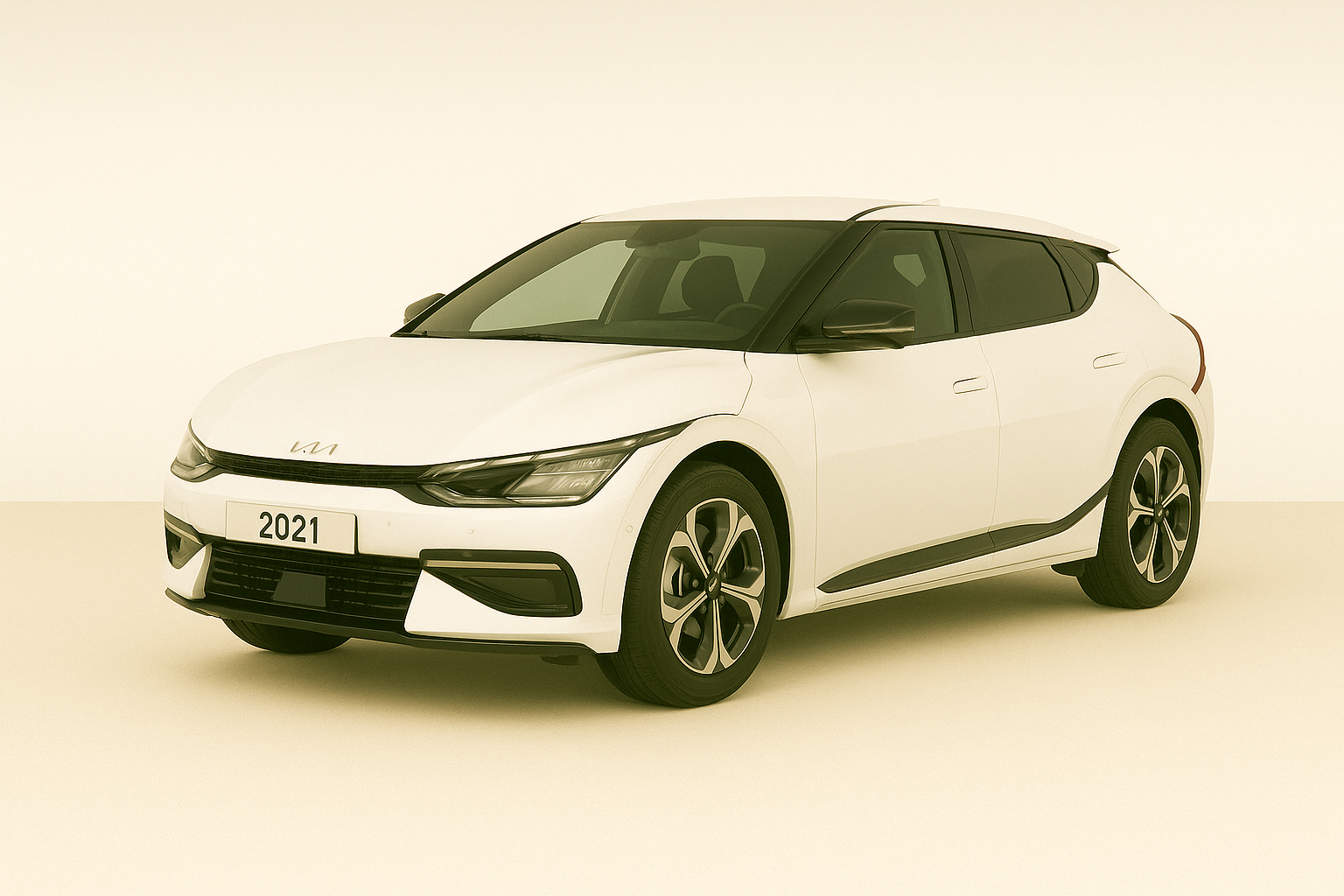Customer Service Lines Open Mon-Fri 9am-6pm



[ Contact Us ]
Need Help? Calling from a mobile please call 0151 647 7556
0800 195 4926Do you have a question? or need help?
Customer Service Lines Open Mon-Fri 9am-6pm, Closed Saturday & Sunday
Quick Answer:
GAP Insurance in the UK usually costs between £100 and £400, depending on your car’s value, policy type, and cover length. Buying online can save you up to 60% compared to dealer prices.
GAP Insurance can be one of the most cost-effective ways to protect your car investment, but understanding how much you should pay isn't always straightforward. Prices can vary depending on where you buy your policy, the type of GAP cover you choose, and even the age and value of your vehicle.
If you’re buying a new or nearly new car, you might be offered GAP Insurance at the dealership, often at a premium. Many drivers don't realise that independent providers often offer the same protection for a fraction of the cost.
Choosing the right policy could save you hundreds of pounds over the lifetime of your cover.
In this guide, we'll explain exactly how much GAP Insurance typically costs in the UK, what affects those prices, and how you can ensure you're getting the best deal for your needs.
Whether you’ve just bought a new car, signed a lease, or are simply shopping around, this is the essential information you need before taking out a GAP Insurance policy.
When it comes to GAP Insurance, knowledge really is power. Understanding what impacts the price, and where additional costs can creep in, could save you hundreds of pounds.
When you look around for GAP Insurance the premiums you see can vary wildly. This can be because there are many types of GAP Insurance cover available, and prices can differ depending on where you are buying your policy from.
Many UK drivers still overpay for GAP policies at dealerships without realising better value options exist elsewhere. Taking just a few minutes to compare costs properly could make a huge difference if you ever need to make a claim.
When you're considering GAP Insurance, one of the first questions you'll probably ask is: "How much does it actually cost?" The good news is, GAP Insurance is often much more affordable than people expect — especially if you buy it from a specialist provider rather than through a car dealer.
In the UK, the typical cost of a GAP Insurance policy is between £100 and £400. The final price depends on several factors, including the type of GAP cover you choose, the value of your vehicle, and the length of your policy.
At Total Loss GAP, our latest customer data from early 2025 shows the following average policy prices:
Return to Invoice GAP Insurance: £239.83 (lowest £77.89 to highest £2,317.19)
Vehicle Replacement GAP Insurance: £341.99 (lowest £88.98 to highest £529.87)
Lease & Contract Hire GAP Insurance: £289.98 (lowest £178.72 to highest £870.16)
As you can see, Lease and Contract Hire GAP tends to be the cheapest option. This is because it simply covers any outstanding finance or rental payments on a leased vehicle, rather than trying to match the full value you originally paid or replacing the vehicle entirely.
Lease and Contract Hire GAP can include the optional deposit protection cover, which protects up to £3,000 of any advanced rental payment. 
Return to Invoice and Vehicle Replacement GAP usually cost a little more, but that's because they can cover a much larger shortfall. In many cases, they could save you thousands if your car is declared a total loss.
It’s worth remembering that even the higher-end GAP policies often work out at less than £100 per year when you spread the cost across a multi-year policy. For the peace of mind they provide, many drivers find them to be of excellent value.
Several important factors can influence how much you’ll pay for GAP Insurance. Understanding these can help you work out whether a quote is good value, or whether you might be overpaying.
Here’s what makes the biggest difference to the price:
1. Vehicle Value
The more expensive your car, the higher the potential shortfall if it’s written off. That’s why cars with a higher invoice price usually mean a higher GAP Insurance premium. A £15,000 vehicle carries less risk for insurers than a £40,000 one.
2. Type of GAP Insurance Cover
The type of cover you choose plays a big role in the cost.
Return to Invoice GAP covers the difference between your insurer’s payout and your original purchase price.
Vehicle Replacement GAP covers the cost of an equivalent replacement vehicle, often at a higher replacement price. If your car was new at purchase, then it is the equivalent of a new replacement at the time you make a claim.
Lease or Contract Hire GAP covers only the finance shortfall, making it the cheapest option.
More comprehensive policies usually come with slightly higher premiums because they could pay out larger amounts.
3. Length of the Policy
Longer-term policies generally cost more upfront but may work out cheaper per year. A 3- or 4-year GAP Insurance policy offers extended protection, but expect the initial price to be higher than a 2-year cover.
4. Vehicle make, model and use
Some vehicle types (for example, a full electric car) or manufacturers (for example, Land Rover) can be associated with higher depreciation or claim rates. Therefore, they can attract a higher GAP Insurance premium to reflect this.
Certain vehicle uses, like taxi, chauffeur, or driving school, can also be associated with higher risks. Some GAP Insurance providers will charge a higher premium to cover this, and some may not be able to provide cover at all.
5. Where You Buy the GAP Insurance
Dealerships often charge significantly more for GAP cover. This is partly because of the higher Insurance Premium Tax (20% at dealers vs the standard 12% with independent brokers), but also because of dealership mark-ups and sales commissions.
Buying online through a specialist provider like Total Loss GAP usually means far lower prices for the same cover, or better in some cases.
In short, the price you pay for GAP Insurance isn’t random. It’s based on clear, predictable factors, and once you know what they are, you can spot a good deal when you see one.
If you’ve ever bought a car from a dealership, chances are you were offered GAP Insurance at the same time, and probably at a pretty steep price. While taking the dealer’s offer might seem convenient, it's almost never the cheapest or best value option.
Here’s why GAP Insurance from online specialists like Total Loss GAP is often a much smarter move: .png)
1. Lower Insurance Premium Tax (IPT)
When you buy GAP Insurance from a dealership, you're charged 20% Insurance Premium Tax (IPT), the same rate as the VAT you may pay when buying a new car.
But when you buy independently online, the Insurance Premium Tax rate drops to 12%. This is the same rate you pay for your comprehensive car insurance policy, or your home insurance, for example.
That tax saving alone can knock a serious chunk off your premium, before you even factor in other differences.
2. Smaller Commissions
Dealerships often build large commissions into the cost of the GAP policy, traditionally as much as 50% or more of the price you pay.
Independent brokers, by contrast, typically work on lower margins and aim for higher volume sales instead of maximising profit on every customer.
3. Broader Policy Options
At a dealership, you'll usually be offered a single GAP policy from a single insurer, with little or no flexibility.
Buying online means choosing different types of GAP Insurance (like Return to Invoice, Vehicle Replacement, or Lease GAP) tailored to your needs, not just whatever the dealership is selling that month.
Some online brokers may also have access to more than one insurer's products. This could mean better policy terms for your circumstances, a cheaper premium, or both.
4. Real Price Examples
It’s common to see dealership GAP Insurance quotes of £500 to £1,000 for 3 or 4 years of cover.
By comparison, the same or even better coverage from an independent provider typically costs between £100 and £400.
That’s a potential saving of over 60%, without compromising the quality of your protection.
Quick Comparison: Dealer vs Online GAP Insurance
|
|
Dealer GAP |
Online GAP (like Total Loss GAP) |
|---|---|---|
|
Average Cost |
£500–£1,000 |
£100–£400 |
|
Insurance Premium Tax |
20% |
12% |
|
Commission Load |
High |
Low |
|
Policy Flexibility |
Limited |
Wide choice |
Choosing GAP Insurance shouldn’t be a rushed decision. Taking a few minutes to compare GAP Insurance online could easily save you hundreds, and leave you better protected at the same time.
Knowing that online GAP Insurance is cheaper than dealership options is a great start, but how do you make sure you're getting the best possible deal? Here are a few smart steps you can take:
1. Get a GAP Insurance Quote Early
Many GAP providers require you to take out a policy within 30 to 180 days of buying your car.
The earlier you arrange cover, the more options you'll have, and you’re less likely to miss the eligibility window. Ideally, start getting quotes when you've finalised your car purchase or lease.
2. Compare Multiple Providers
Don't settle for the first price you see. Some providers offer multi-year policies that cost less yearly, while others include extras like hire car and higher excess cover, some of which you may not need. Comparing two or three GAP quotes online takes minutes and could save you money.
Remember, GAP Insurance from Total Loss GAP is not available on price comparison websites. You get the maximum value up front without paying any fees or commissions to the comparison hosts out of your premium.
3. Choose the Right Type of Cover
Different types of GAP Insurance suit different situations:
Bought your car outright? Return to Invoice GAP might be best.
Driving a lease? Lease & Contract Hire GAP is more suitable.
Bought at a discount or expect price rises? Vehicle Replacement GAP could save you more in a claim.
Choosing the right product means you’re not overpaying for protection you don't need, but you're still fully covered if the worst happens.
4. Check for Hidden Extras
Some GAP providers bundle in extras like tyre cover, cosmetic repair, or breakdown assistance. Only choose what you need.
Ensure you know what you're paying for, and that you’re not paying extra for features you won’t use.
One extra you might consider is Deposit Protection on a Lease GAP policy. If you have paid an advanced rental on your lease (commonly a multiple of monthly rentals up front), you can protect this in addition to your lease agreement shortfall.
5. Confirm the Key Terms
Before you buy, double-check:
What claim limit applies (some cheaper policies cap payouts - At Total Loss GAP we have no claim limits on Return to Invoice and Vehicle Replacement cover up to £75,000 purchase price and then £75,000 maximum for vehicles purchased up to £100,000. Lease and Contract Hire GAP has no claim limit on vehicles with monthly rentals up to £1,000 a month and £25,000 maximum claim limit above that monthly rental currently.
How long the cover lasts - do not assume all GAP policies simply last three years (the set period traditionally offered at motor dealers)
If there are any age or mileage limits - most GAP Insurance products have a maximum age and mileage of vehicle when you buy the policy. This is only when you buy and if the mileage goes over the initial cap a purchase then this should be fine.
A cheaper price isn’t worth it if the small print leaves you exposed at the time of a claim.
Getting GAP Insurance at the right price isn’t just about paying less, it’s about making sure you get the protection that’s right for you, at the best value possible.
Is GAP Insurance worth it? At Total Loss GAP, we have provided GAP cover that has seen millions and millions of pounds paid out in claims.
Here are some facts and figures that may help you understand how our customers have benefited from a GAP Insurance policy from us.

GAP Insurance in the UK usually costs between £100 and £400, depending on your car’s value, policy type, and cover length. Buying online can save you up to 60% compared to dealer prices.
It can be. When you generate a GAP Insurance quote then it will normally be provided as a full premium, inclusive of Insurance Premium Tax, for the full term you choose. It should not be an annual payment if you have selected a four-year term, for example.
You may have options to spread the payment of the premium over the first twelve months through the likes of PayPal Credit or a premium funding agreement through Premium Credit PLC.
Be careful to check what impact this arrangement may have on your credit file. As the agreement is arranged through a finance company then you will expect that a credit check is undertaken and that a footprint could be left on your credit file.
Not directly, because it is your choice how long you take the GAP Insurance policy for. So if you have a four year finance agreement then you can take four year GAP cover too. However, you could take a shorter term for the GAP Insurance too. You may not have any intention of keeping the car for the full four years. If this is the case, you may take three years GAP protection instead.
The longer period you take GAP Insurance for, the higher the premium. However, choose carefully the period of GAP cover you take because you will not be able to extend it at the end, nor will you qualify for a new GAP policy in most cases.
In most cases, yes you can. However, there is normally a window in which you can buy cover. Different GAP Insurance providers have different maximum periods which can range from up to 90 days, 180 days or even 365 days from the vehicle purchase in certain circumstances.
Not directly, particularly if they are the same purchase price. GAP Insurance (also known as Guaranteed Asset Protection) covers depreciation on your car. The idea being is that your car insurance provider will cover you for the current market value of your vehicle if it is written off or stolen. Your GAP Insurance tops up the car insurance payout from your motor insurer.
If you buy a new or used car for say £25,000 then a return to invoice GAP Insurance policy should be the same premium.
Some argue that GAP Insurance may not be as useful on a used car, because they say used cars do not depreciate as much as a new car. We think that argument is not that simple. A used car is not always a cheap car and also comes with some risk.
You may like to read our article on GAP Insurance for used cars - is it worth it?
GAP Insurance can cost less than most people expect
Avoid paying dealership prices unnecessarily
Shop smart: use independent providers like Total Loss GAP
Ready to protect your investment for less? Get an instant online GAP Insurance quote today from Total Loss GAP.